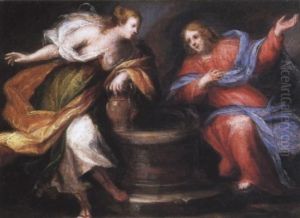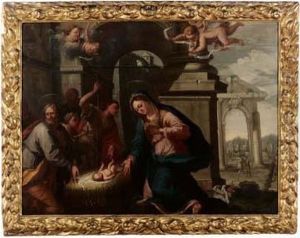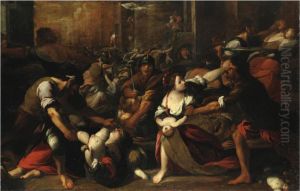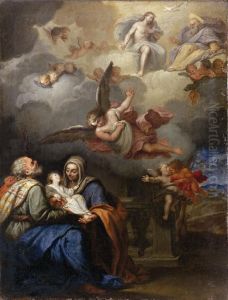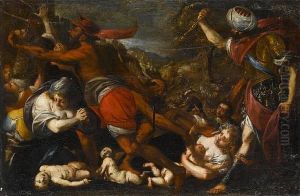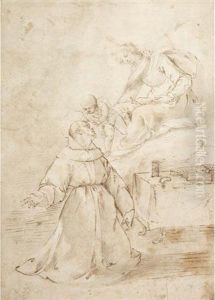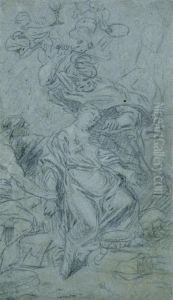Giovan Battista Discepoli Lo Zoppo Da Lugano Paintings
Giovan Battista Discepoli, known as Lo Zoppo Da Lugano due to his limp, was an Italian painter and printmaker who played a significant role in the Renaissance art movement of the 16th century. Born in 1500 in Lugano, which was then part of the Duchy of Milan, Discepoli's early life is shrouded in mystery, and little is known about his family or early education. What is clear, however, is that he emerged as a talented artist who worked primarily in Northern Italy, contributing to the rich tapestry of Renaissance art through his unique style and artistic vision.
Discepoli's work is characterized by its intricate detail, vibrant colors, and the emotional depth of its subjects. He was deeply influenced by the major artists of his time, including Leonardo da Vinci, Raphael, and Michelangelo, and his work reflects the transition from the High Renaissance to the Mannerist style that became popular in the mid-16th century. Despite his physical disability, which earned him the nickname 'Lo Zoppo' (the Lame), Discepoli's art was not hindered; instead, it flourished, showcasing his resilience and dedication to his craft.
Throughout his career, Discepoli worked on a variety of projects, including religious frescoes, altarpieces, and portraitures. His ability to capture the human form with such realism and expressiveness made his religious scenes particularly poignant, while his portraits were admired for their lifelike qualities and psychological depth. Unfortunately, much of his work has been lost or remains unidentified, which has led to a somewhat obscure legacy compared to his contemporaries.
Discepoli's contribution to the art world extends beyond his paintings. He was also involved in the early printmaking movement in Italy, utilizing woodcuts and engravings to reproduce his works and make them accessible to a wider audience. This not only helped disseminate his artistic style but also contributed to the spread of Renaissance ideas and aesthetics beyond Italy's borders.
Giovan Battista Discepoli, Lo Zoppo Da Lugano, passed away in 1564, leaving behind a legacy that, while not as well-known as some of his peers, is deeply respected among art historians and Renaissance art enthusiasts. His work continues to be studied and appreciated for its contribution to the development of 16th-century Italian art, offering insights into the period's cultural and aesthetic shifts.
